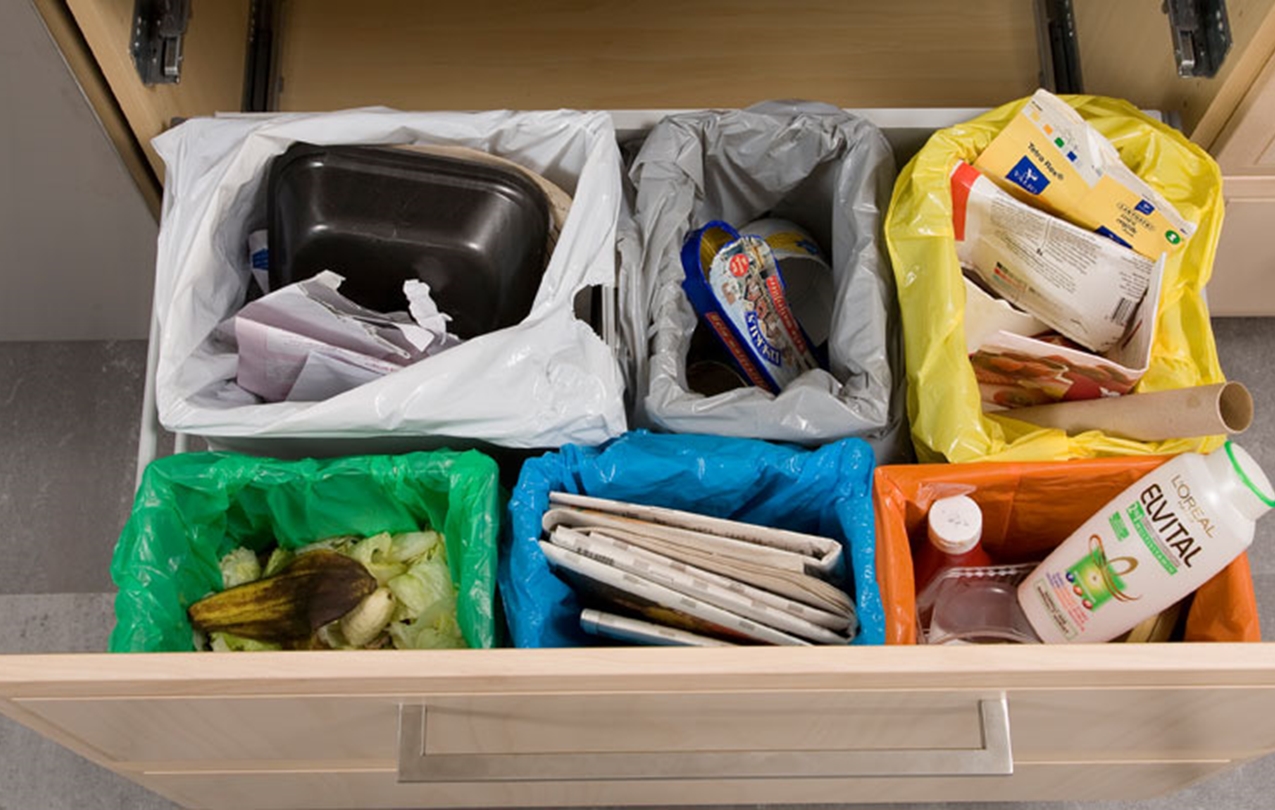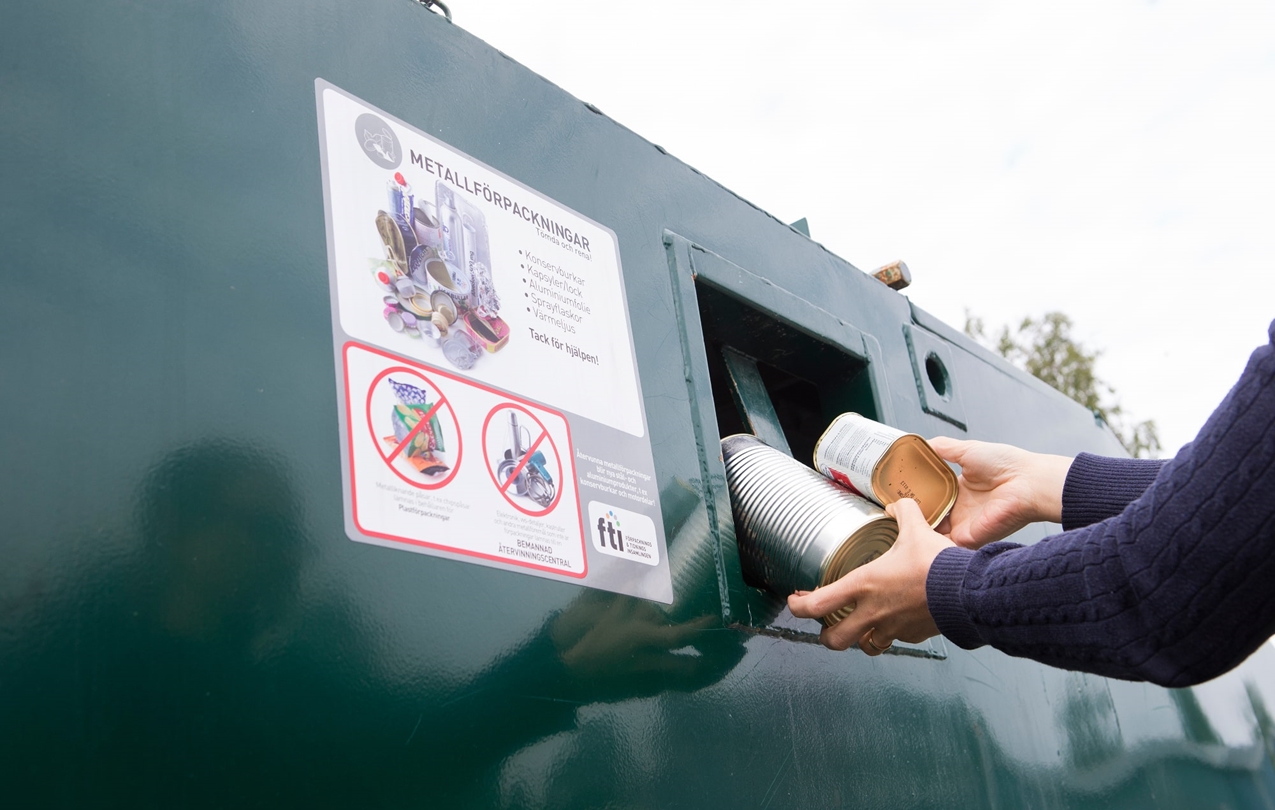Recycling Guide.
Many containers contain valuable materials which we through recycling can save both raw materials and energy. Below you will find information on how to best handle different materials.
Many containers contain valuable materials which we through recycling can save both raw materials and energy. Below you will find information on how to best handle different materials.
Today, environmental solutions and sustainability is something that is increasingly demanded in all types of industries. Many packaging products contains valuable materials that through recycling make it possible to save both raw materials and energy. Therefore, it is important for companies and businesses to take care of their waste in the best way.
In this guide, we have gathered information about how companies can work with recycling, what you should think about regarding different materials and how you sort correctly for materials to be recyclable correctly.
Most of the materials we have in our products today come from nature and natural resources are not endless. By recycling materials, we can reduce the consumption of nature's resources and allow consumed material to circulate back into new products or energy. Below we have listed the positive effects of recycling:
By recycling materials, we can reduce the need to consume natural resources.
Processing recycled material uses less energy when producing new products compared to the use of new raw material.
We can also extract energy through combustion of unrecyclable materials.
Production of products with recycled material is in many cases harmful for the environment. For example, the use of recycled paper reduces air pollution by 74%.
In our product descriptions you will find information on how to sort the product after you or your customers are done with them.
There are some who claim that recycling does not make any difference. Mostly this is due to poor understanding of how recycling works and here we have compiled 8 common myths about recycling and associated answers.
PACKAGES NEED TO BE CLEANED CAREFULLY
No! It is not needed, but the packaging must be completely empty. Otherwise, they may end up failing in the automatic recycling process, which sorts the packaging by weight. It is not necessary to rinse out the packages, but for your own sake, and for those who work with the handling of the packages, it can be nice with rinsed packages.
Source: FTI
No! Recycling provides a significantly greater profit for the environment, even if it consumes energy for transport. This was stated in the Government Review "Resource in Return" SOU 2001: 102.
Source: FTI
If everyone would thinks like that way, not much recycling would be done. Together we can make matter, therefore your contribution is important. Some examples:
Source: FTI
Wrong! Nothing is mixed. Everything is sent separately to different, specialized, recycling facilities.
Source: FTI
No! If you dispose of all your packaging in the regular waste, they will be destroyed by burning and not recycled to new products. While burning with them generates heat and electricity, it is much better for the environment to make new products from old packaging and newspapers. It is possible to recycle virtually all packaging of plastic, paper, metal and glass, as well as newspapers.
Source: FTI
The environmental benefit of recycling aluminum and steel consists of large amounts of energy savings if old material is recycled, compared to producing new material. When recycling aluminum, only 5 percent of the energy is needed compared to the energy used in new production. The corresponding figures for steel are 25 percent. Both aluminum and steel can also be recycled as many times as possible without lsoing quality.
Source: FTI
THERE IS A LOT OF FOREST IN SWEDEN, THEREFORE WE DO NOT NEED RECYCLE PAPER PACKAGING AND NEWSPAPERS
It is both cheaper and more energy efficient to recyle paper packaging and newspapper than to make new paper from new raw material.
Source: FTI
Below you will find five tips that will help you fix a recycling that works.
1. SORT YOUR WASTE
By obtaining the right equipment, the waste management job gets much easier. We offer containers, garbage bags, labels and other practical products. See our range by clicking here.
2. FIND YOUR NEAREST RECYCLING STATION
At NPA's recycling stations, you can submit your company's used paper, plastic and metal packaging. You can leave a maximum of one cubic meter per material type and time. If you want to know whare your recycling station is, go to npa.se.
3. CHECK WITH YOUR MUNICIPALITY
If you intend to leave your packaging at the nearest recycling station, it is good to check with your municipality what applies. Usually it is possible leave a smaller amount of material at a small cost, sometimes free.
4. TIPS FROM THE HOUSE OWNER
If you have a fixed premises it may be good to be good with the house owner about waste management. They can often give you tips on solutions or tips on waste contractors.
5. CONTRACT AN APPROVED WASTE CONTRACTOR
You can check with your food waste contractor if they can also handle your paper, plastic, glass and metal packaging. You can also find approved waste contractors at recycla.se. Recycla.se is a free service where you can get quotes from waste contractors in your local area.
Näringslivets Producentansvar (NPA) is a producer responsibility organization that assists producers of packaging in fulfilling their producer responsibility. Their goal is to increase recycling throughout the chain and contribute to the journey towards a more circular society.
The company is owned by industry organizations such as the Dagligvaruleverantörers Förbund (DLF), Svensk Dagligvaruhandel, Sveriges Bryggerier, and Sprit & Vinleverantörsföreningen (SVL). The operation is conducted on a non-profit basis, with no financial distribution to the owners.
The definition of a paper packaging is a product that consists of minimum 50% of paper fiber. In 2017, just over half a million tonnes of paper packaging were submitted for recycling. The material that is recycled can be used as a raw material for creating new products. Recycled paper is mainly used in the manufacture of corrugated cardboard, packaging board, newsprint and hygiene paper. Pulp and paper production from recycled materials requires only one-third of the energy required for new paper production. A paper fiber can be recycled up to seven times.
From 2020, 85% of all paper packaging should be recycled. To achieve this goal, both consumers and companies need to improve their recycling. Companies can both review their own recycling, but also encourage consumers and customers to recover material through information or with good waste management.
In Paper packaging, you can leave:
Plastic is a collective name for a large group of materials based on different polymers. The most common types of plastic used for packaging products are LDPE, HDPE, PP, PET and PS. The recycling of plastics and the use of recycled plastics in products is a strong upgoing trend throughout Europe. Plastic can be recycled up to seven times before the plastic molecule is completely degraded.
There are several advantages with recycling plastic. By recycling plastic packaging, new materials can be created from the materials that can be used to create new products, for example carrying bags, garbage bags, plastic furniture etc. One kilogram of recycled plastic reduces carbon dioxide emissions by about 2 kg, compared to the production of new plastic.
According to regeringsförordningen (2014: 1073), 50% of all plastic packaging on the market should be recycled in 2020. To achieve this goal, your company should first and foremost make sure that you recycle the plastic packaging that you use in your business today. We also recommend that you encourage and inform your customers about recycling.
For a long time - soft and hard plastic were seperated and sent the soft plastic was directly sent for combustion. Nowadays, soft plastic is also recycled. For plastic recycling you can sort the following products:
When you submit plastic for recycling, the materials that can be recycled will be recycled. The remaining material is destroyed by burning and becomes energy.
Aluminum products such as Aluminum containers and aluminum foil are recycled as metal packaging.
Sometimes plastic bags have a foil of metal on the inside. It can make it difficult to determine which material the product consists of. One tip is to crunch it. If it unfolds, it is most plastic. If it stays crunched, it is mostly made of metal.
Author: Tingstad
Last Updated: 2024-01-12
Here you will find information and products that will help you set up system to collect and separate your waste for both your home or your office. We give you practical tips on products and waste management systems that allow you to easily sort your waste so you can recycle more. We have products for both stylish and functional source sorting for offices, schools, restaurants etc.
Read more











